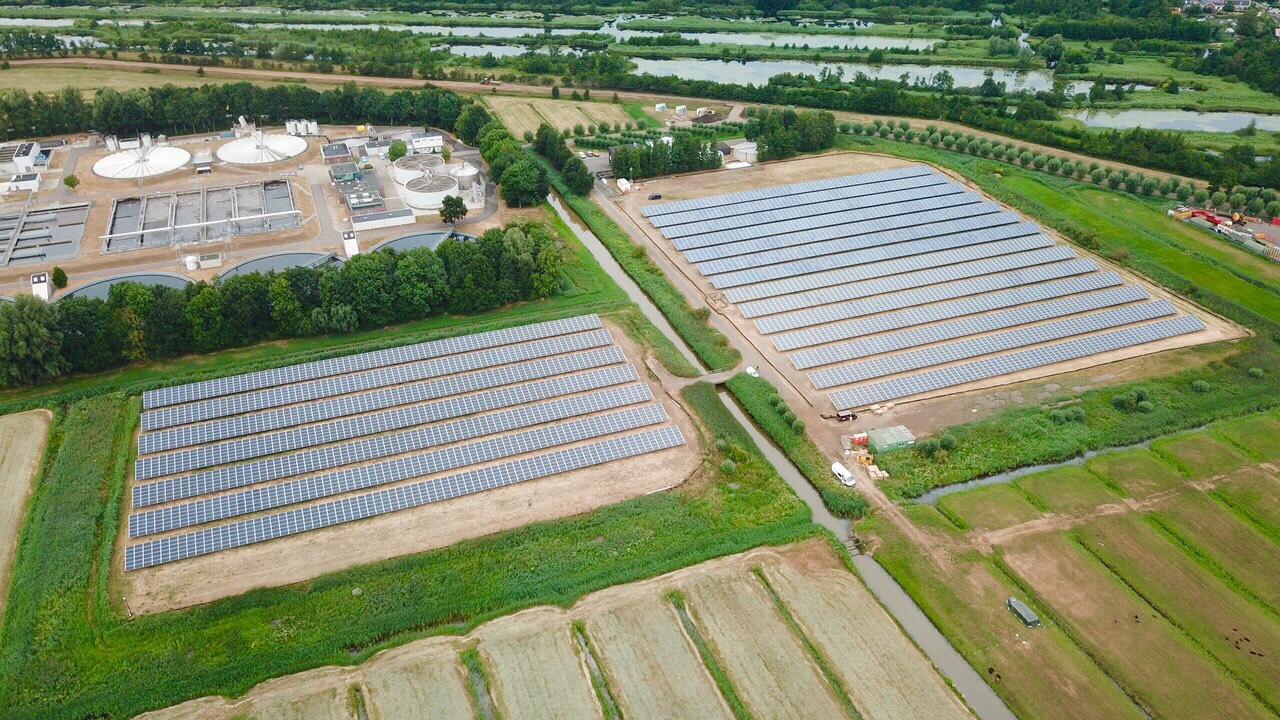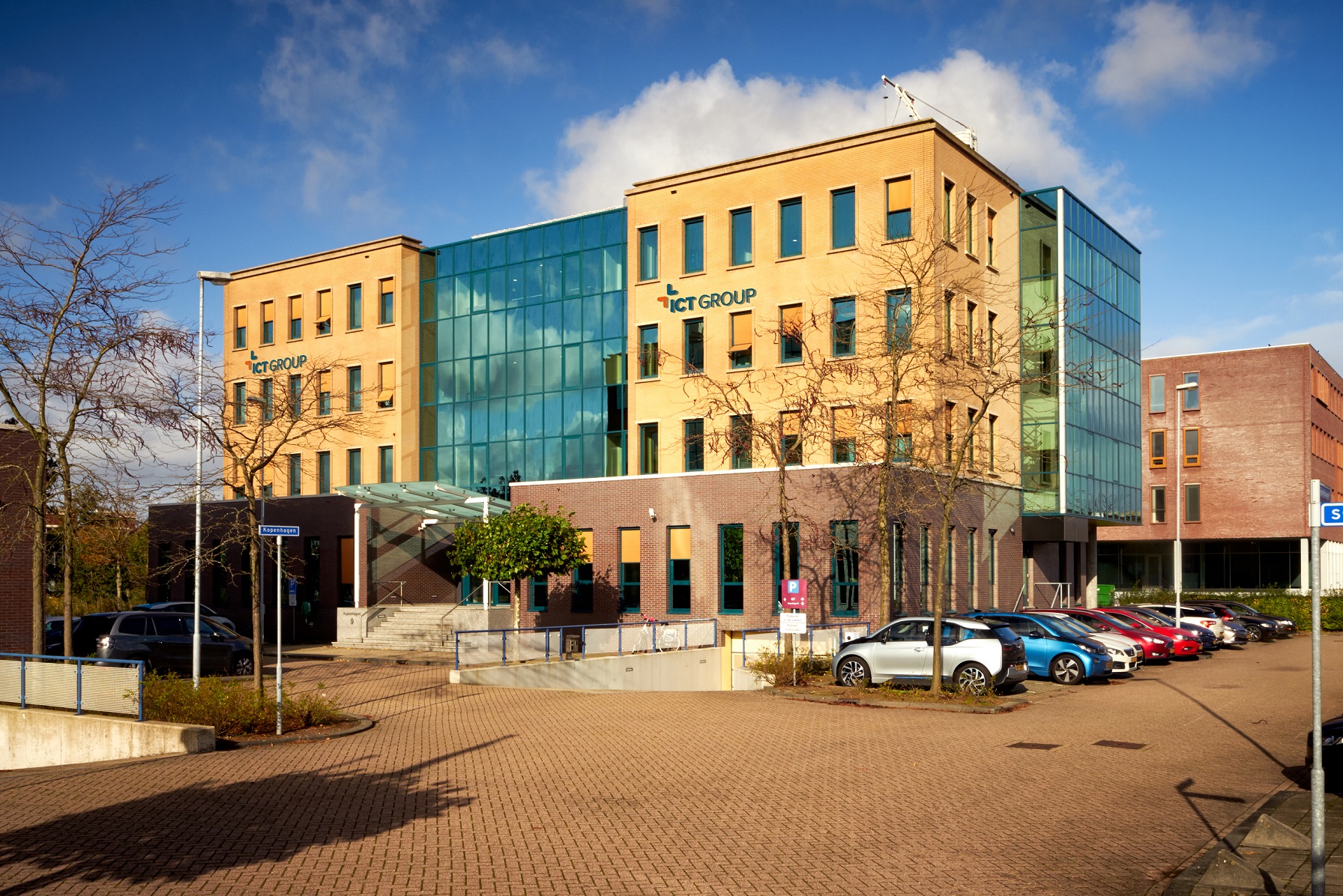
Can a waste water treatment plant reduce costs by means of flexible energy consumption?
- 29 March 2019
- 3 minutes
Soon after the solar park at the waste water treatment plant in Horstermeer had been completed, the Amstel, Gooi en Vecht (AGV) / Waternet Water Authority wanted to know whether it was possible to achieve additional energy cost savings. For instance, by means of flexible energy consumption. The water company applied ICT Group’s 20 Day Challenge to investigate a positive business case. And this certainly proved to be possible. By applying CHP plants via a smart Energy Management System (EMS), the treatment plant can achieve a considerable reduction of its energy costs on an annual basis.
Waternet is the joint organization of the Amstel, Gooi en Vecht Water Authority and the municipality of Amsterdam. The water company’s main activity is producing drinking water, but the company is also responsible for managing waste water treatment plants. Waternet now intends to expand its water supply activities by supplying energy. For instance, by generating and supplying energy from waste water, surface water and drinking water (aqua-thermal technology). AGV / Waternet’s plan is to operate the waste water treatment process in an energy-neutral way by means of installing solar panels. ICT Group’s experts were asked to support the water company in achieving its energy objectives.
On-site investigation
ICT Group’s Technical consultant Elke Klaassen carried out the twenty-day investigation for AGV / Waternet. “My assignment was to determine the value of flexibility in the supply and demand of energy. My first step was to visit the water treatment plant to talk to the process operators and investigate all processes and assets. What are their energy consumption levels? My talks with the operators allowed me to determine whether there were any possibilities of flexible energy consumption at all, and to identify any possible quick wins. Horstermeer turned out to have CHP plants that convert biogas, which is generated at the treatment site, into electricity. These combined heat and power installations offer tremendous opportunities. A CHP plant produces heat and energy, and the energy can be made available on a need-basis. This opens up opportunities for flexible energy production, and I managed to make a detailed investigation of the opportunities of applying CHP plants as part of the project. When is the CHP plant operational? At what levels of biogas does it produce energy? And what happens if you increase those levels?”
“My conversations with the operators allowed me to determine whether there were any possibilities of flexible energy consumption at all, and to identify any possible quick wins.”
EnergyNXT
The EnergyNXT platform provides transparent insight into an organization’s energy regime. In addition, EnergyNXT offers a wealth of facilities for smart ways of organizing and aligning the energy consumption or production of all assets. The platform was developed by ICT Group and it is the foundation for EMS systems.
Options to achieve savings
Klaassen continues by saying that there are three ways of achieving savings by controlling the demand. For instance, you can shift processes over a period of time in order to benefit from lower energy rates more often. “This option is called ‘high-low rate’.” Another option is to distribute the energy consumption, which may allow you to use a lower capacity connection to the grid, or it may enable you to reduce the variable cost of an existing connection to the grid. This also allows you to achieve a considerable cost reduction. The last option uses the available flexibility to operate the treatment plant in an energy-neutral way. This is achieved by maximizing the plant’s own energy production, and minimizing the amount of electricity that is returned to the grid. “From an economic perspective, this last option turned out to be the most attractive solution for AGV / Waternet. In addition to an increase in the plant’s own consumption of the sustainable energy production, it also results in reduced peak loads on the electricity grid.” Klaassen came to this conclusion by modelling the various options retrospectively. “I made use of existing historical data, combined with the data from the various scenarios. This provided insight into the economic perspective of the various solutions and this resulted in a positive business case at AGV / Waternet.”
Energy Management System
However, you can’t blindly copy these results to any other water treatment plant. Klaassen: “This really depends on the assets. We have completed our 20 Day Challenge at AGV / Waternet, but the company still has to decide whether they actually want to implement the optimization. What you need to achieve the possible
savings is an energy management system (EMS), and realizing an EMS will be based on ICT’s energyNXT platform. This platform offers opportunities for smart ways of organizing and aligning the energy consumption or production of all assets. An EMS allows an organization to make predictions of the expected electricity demand in the water treatment process, as well as the expected amount of electricity generated by the solar park, and the expected production level of biogas. These predictions can be used to optimize and schedule the CHP’s demand. The earn-back model of this investment is expected to be some three to five years.”
Relevant
Elke Klaassen emphasizes that the results achieved by ICT Group for AGV / Waternet are extremely relevant. “The project at hand focussed on a single waste water treatment plant, but you can imagine the possible scope of reductions if you were to combine this for all water treatment plants in The Netherlands. And because this is so interesting, I’ve decided to team up with Gijs van der Meer, a Water and Energy Consultant at AGV / Waternet, to give a presentation on this subject during the Water Info Day on 28 March 2019. After all, this case is very relevant and interesting for many other water treatment plants.”
Can a waste water treatment plant reduce costs by means of flexible energy consumption?
Case study
